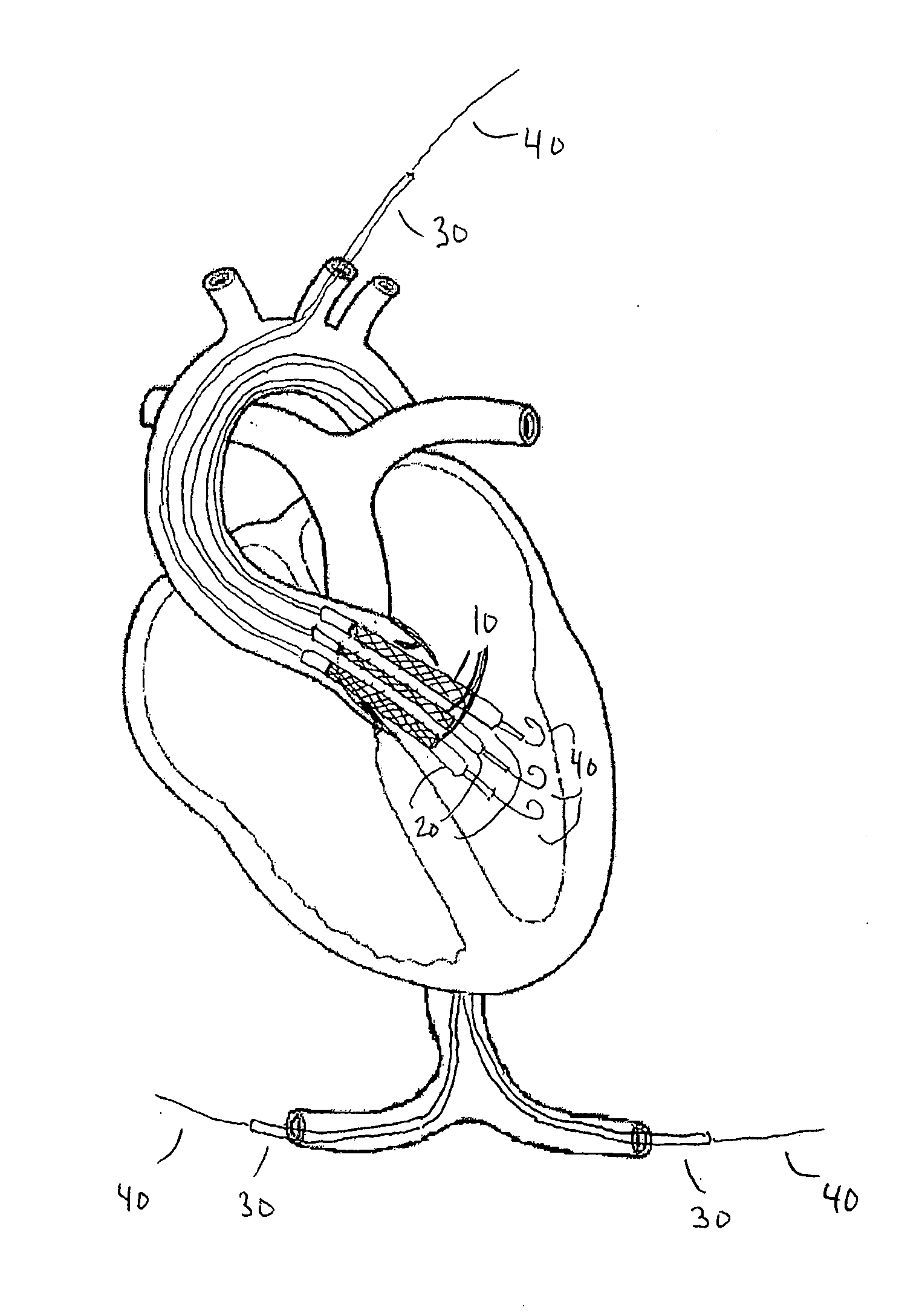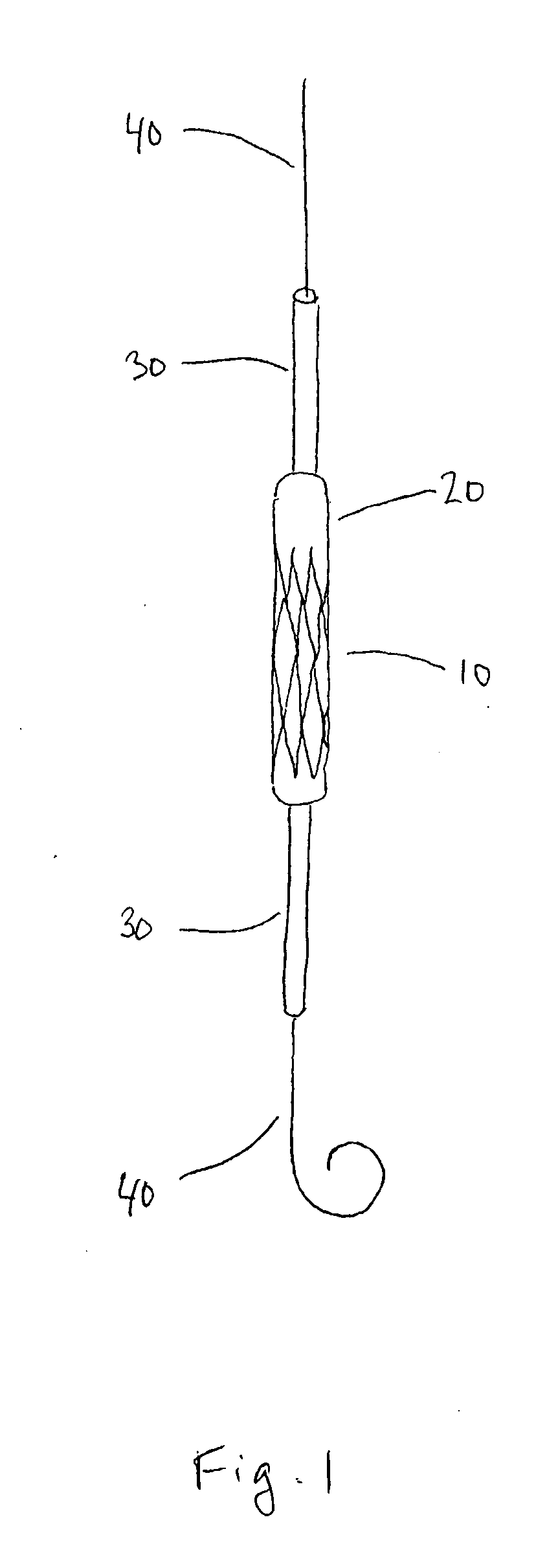Percutaneous aortic valve assembly
a technology of aortic valve and aortic valve, which is applied in the field of percutaneous aortic valve assembly, can solve the problems of limited success, inability to surgically manage patients, and inability to achieve the effect of percutaneous treatment of valvular heart disease, and achieve safe and accurate placement of valves. , the effect of increasing blood flow
- Summary
- Abstract
- Description
- Claims
- Application Information
AI Technical Summary
Benefits of technology
Problems solved by technology
Method used
Image
Examples
Embodiment Construction
[0015]The present invention relates to valving methods and devices that address many of the issues surrounding percutaneous valve replacement, including access site complications, flexibility, length of anchoring components, risk of stroke, and damage to cardiac structures. A preferred embodiment includes implanting several smaller valve devices that are assembled at the site of valve replacement to form a larger valve assembly. Each valve device contains a valve mounted within a stent. The valve assembly is a compound valve, containing two or more valve devices, each with its own valve structure. The stents are sufficiently long, flexible, and textured so that, when expanded, they apply a lateral force against the vessel wall and against each other which is sufficient to prevent significant backflow around or through the valve assembly and sufficient to prevent migration of the valve assembly. Since the valve assembly is built up at the site of valve replacement, the individual val...
PUM
 Login to View More
Login to View More Abstract
Description
Claims
Application Information
 Login to View More
Login to View More - R&D
- Intellectual Property
- Life Sciences
- Materials
- Tech Scout
- Unparalleled Data Quality
- Higher Quality Content
- 60% Fewer Hallucinations
Browse by: Latest US Patents, China's latest patents, Technical Efficacy Thesaurus, Application Domain, Technology Topic, Popular Technical Reports.
© 2025 PatSnap. All rights reserved.Legal|Privacy policy|Modern Slavery Act Transparency Statement|Sitemap|About US| Contact US: help@patsnap.com



